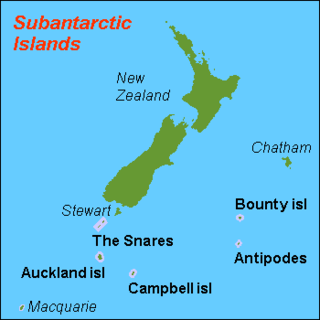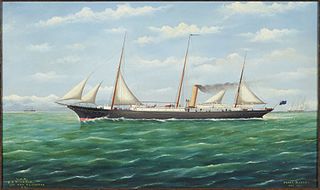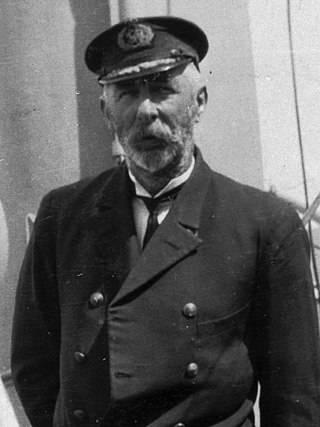
The Auckland Islands are an archipelago of New Zealand, lying 465 kilometres (290 mi) south of the South Island. The main Auckland Island, occupying 510 km2 (200 sq mi), is surrounded by smaller Adams Island, Enderby Island, Disappointment Island, Ewing Island, Rose Island, Dundas Island, and Green Island, with a combined area of 626 km2 (240 sq mi). The islands have no permanent human inhabitants.

The Antipodes Islands are inhospitable and uninhabited volcanic islands in subantarctic waters to the south of – and territorially part of – New Zealand. The 21 km2 archipelago lies 860 km to the southeast of Stewart Island/Rakiura, and 730 km to the northeast of Campbell Island. They are very close to being the antipodal point to Normandy in France, meaning that the city farthest away is Cherbourg-en-Cotentin, France.

The New Zealand Subantarctic Islands comprise the five southernmost groups of the New Zealand outlying islands. They are collectively designated as a UNESCO World Heritage Site.

General Grant was a 1,005-ton three-masted bark built in Maine in the United States in 1864 and registered in Boston, Massachusetts. It was named after Ulysses S. Grant and owned by Messers Boyes, Richardson & Co. She had a timber hull with a length of 179.5 ft, beam of 34.5 ft and depth of 21.5 ft. While on her way from Melbourne to London, General Grant crashed into a cliff on the west coast of main island of the Auckland Islands of New Zealand, and subsequently sank as a result. Sixty-eight people drowned and only 15 people survived.

Enderby Island is part of New Zealand's uninhabited Auckland Islands archipelago, south of mainland New Zealand. It is situated just off the northern tip of Auckland Island, the largest island in the archipelago.

A castaway is a person who is cast adrift or ashore. While the situation usually happens after a shipwreck, some people voluntarily stay behind on a desert island, either to evade captors or the world in general. A person may also be left ashore as punishment (marooned).

Disappointment Island is one of seven uninhabited islands in the Auckland Islands archipelago, in New Zealand. It is 475 kilometres (295 mi) south of the country's main South Island and 8 kilometres (5 mi) from the northwest end of Auckland Island. It is home to a large colony of white-capped albatrosses: about 65,000 pairs – nearly the entire world's population – nest there. Also on the island is the Auckland rail, endemic to the archipelago; once thought to be extinct, it was rediscovered in 1966.

A castaway depot is a store or hut placed on an isolated island to provide emergency supplies and relief for castaways and victims of shipwrecks.
The Derry Castle was a 1,367 ton iron barque built at Glasgow in 1883, and initially operating out of Limerick, Ireland. She had been registered there on 19 November 1883 by Francis Spaight & Sons. In 1887 while voyaging from Australia to the United Kingdom with a cargo of wheat, she foundered off Enderby Island, in the subantarctic Auckland Islands, on a reef which now bears her name.

NZGSS Hinemoa was a 542-ton New Zealand Government Service Steamer designed specifically for lighthouse support and servicing, and also for patrolling New Zealand's coastline and carrying out castaway checks and searching for missing ships. It operated in New Zealand's territorial waters from 1876 to 1944.

Port Ross is a natural harbour on Auckland Island in the Auckland Islands Group, a subantarctic chain that forms part of the New Zealand Outlying Islands.

John Peter Bollons was a New Zealand marine captain, naturalist and ethnographer. For many years he captained New Zealand government steamers, including the NZGSS Hinemoa, which undertook lighthouse work and patrols through New Zealand's subantarctic islands. Bollons Island, in the Antipodes Islands, is named after him. In 1928 he was appointed a Companion of the Imperial Service Order.
Grafton was a 56-ton schooner sailing out of Sydney during the 1860s that was wrecked on 3 January 1864 in the north arm of Carnley Harbour, Auckland Island, one of the New Zealand Subantarctic Islands, nearly 480 kilometres (300 mi) south of the South Island. Her castaway crew waited a year for a ship to come to their rescue, which, it soon became apparent, would not come. Six months later, three men decided to set out in a dinghy and managed to cross a distance of 450 kilometres (280 mi) to Stewart Island, 30 kilometres (20 mi) south of New Zealand's South Island. They then funded a rescue mission to pick up their remaining companions. The crew spent a total of 18 months on the sub-Antarctic island and, despite their ordeal, all survived.
The Invercauld was an 1,100-ton sailing vessel that was wrecked on the Auckland Islands in 1864.

The Sub-Antarctic Islands Scientific Expedition of 1907 was organised by the Philosophical Institute of Canterbury. The main aim of the expedition was to extend the magnetic survey of New Zealand by investigating Campbell Island and the Auckland Islands, but botanical, biological and zoological surveys were also conducted.
Anjou was a 1,642 gross register tons (GRT), French steel barque built in 1899. It was wrecked in the Auckland Islands in 1905.
Compadre was an iron barque of 800 tons that was wrecked in the Auckland Islands in 1891.
Spirit of the Dawn was a British 692-ton iron barque that wrecked in the Antipodes Islands on 4 September 1893. She was built at Sunderland in 1869 by T. R. Oswald and Co. and owned by J. Bell and Son of Liverpool.
Workman, Clark and Company was a shipbuilding company based in Belfast.















